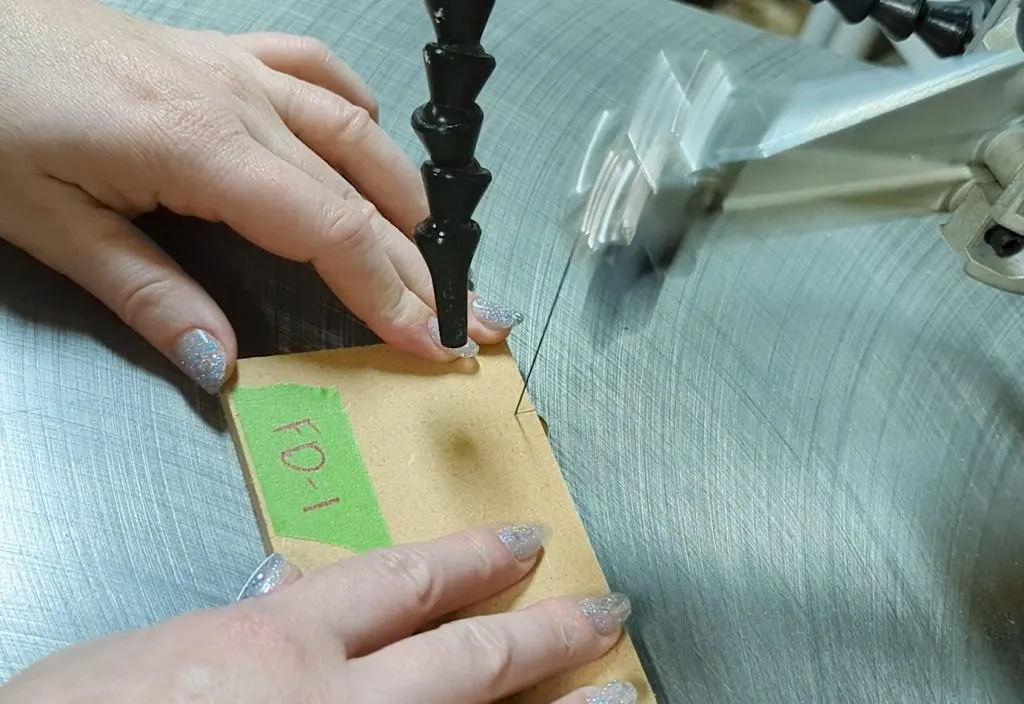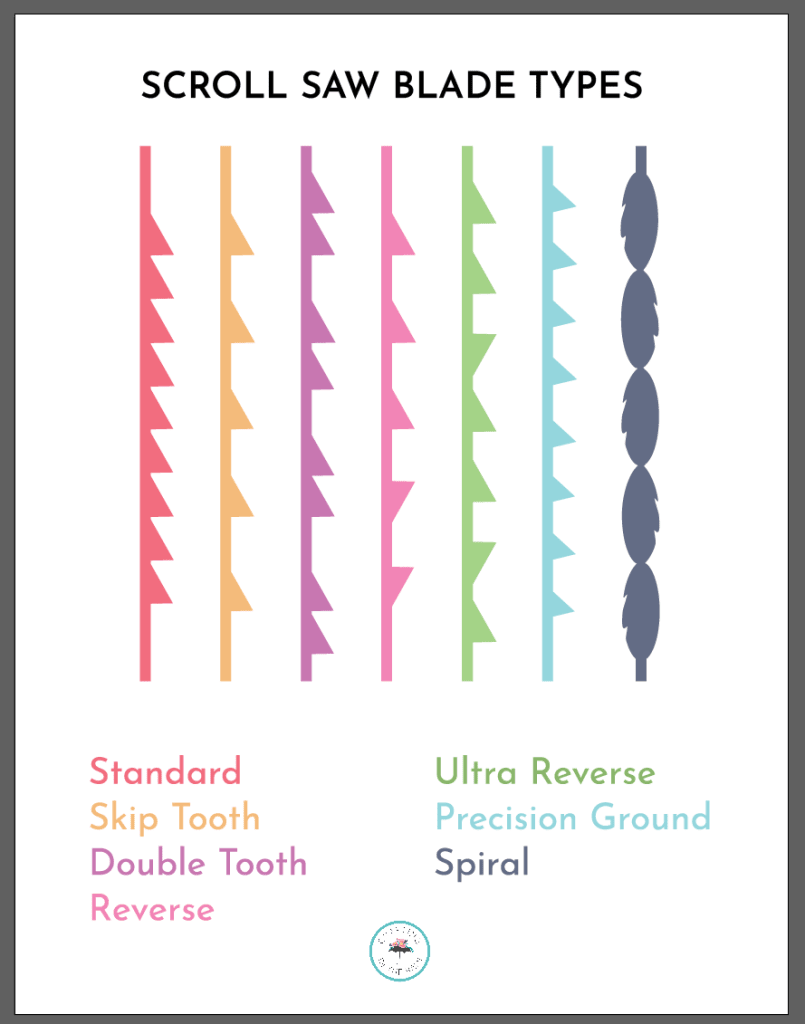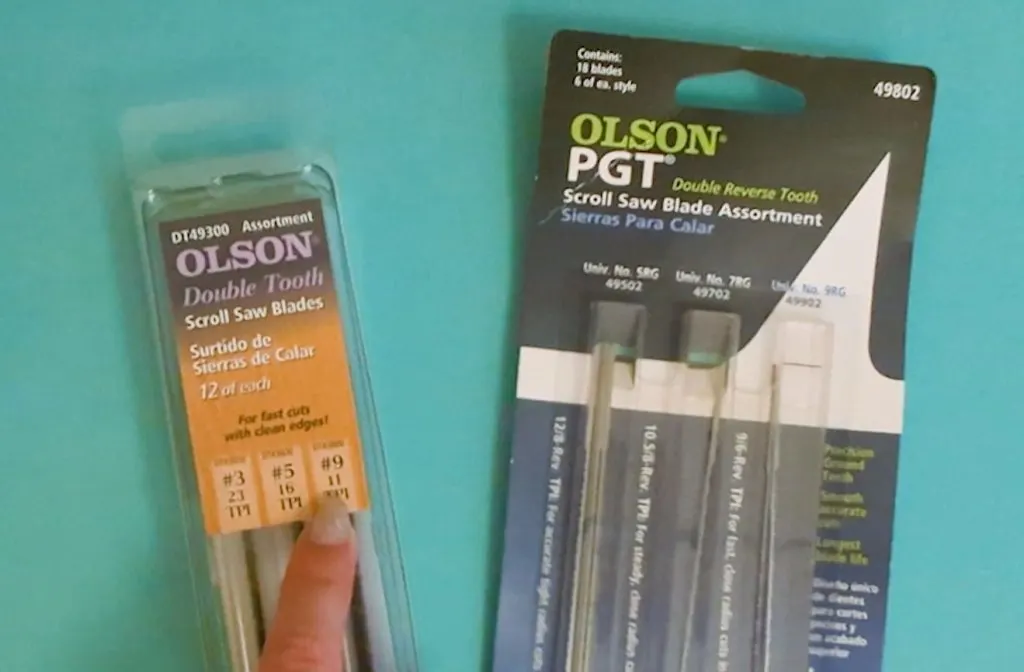When I first started learning about scroll saws, I admit to being intimidated by all the different types online and in stores. And instead of telling you that eventually you’ll find what works best for you, I’m going to help you out and give you the best scroll saw blades for beginners.

Pin or Pinless scroll saw blades
Get a scroll saw that uses pinless blades! These blades are both easier to work with, and better suited for small inside cuts that you might need for words or other parts of your projects.
Then when you are shopping for blades, ignore anything that says it has a pin top.
Types of scroll saw blades
The type of blade is going to tell you about the tooth pattern used.

I created this PDF as a reference to easily show the blade types. If you’d like to print out a copy, you can receive it by email by filling out this form
Skip tooth scroll saw blade
Any type of skip blade is much more common now than a standard blade because the gaps between teeth help clear out dust and chips, creating a smoother cut.
reverse scroll saw blade
Reverse teeth point up from the bottom of the blade and may be found just as a few teeth at the bottom (Reverse Blade) or scattered like two-bottom, one-up (Ultra Reverse Blade.)
These teeth cut the material on the up stroke, giving a cleaner edge and reducing fuzziness (in MDF) and tear out or splintering (in wood.)
Spiral scroll saw blade
A spiral blade has been twisted around so it can cut in any direction. This makes it really difficult to cut a straight line. It’s also easier to make a mistake with the blade slipping to a part you didn’t mean to cut.
Fans of the spiral blade may do intricate inner cuts, or may be working with material that is too large to spin around on their table – the wood needs to come back towards you because it can’t be pushed any farther away from you.
But again – not beginner, and really most people don’t use them.
Numbers of scroll saw blades
scroll saw blade size
The size of the blade will be marked on the package by just a number, or a number with the # in front of it. Smaller numbers are smaller blades. Larger numbers are larger blades.
Larger blades are usually needed for thicker material, or double stacked material, and need the strength to move through it.
Smaller blades cut more slowly and are useful for small and detailed cuts.

scroll saw tpi
TPI stands for teeth per inch. The higher the number, the more densely packed the blade will be with teeth. A standard blade would have twice the teeth of a skip tooth blade. In generally, larger blades have fewer teeth per inch because the teeth are also getting a little larger.
TPI is also higher for blades designed to cut metal.
Best scroll saw blade for beginner
With all that information, what do I tell people to start with?
Flying Dutchman Ultra Reverse #5. The Ultra Reverse blade patterns means there are 2 teeth pointing down, then 1 pointing up. And this pattern repeats down the blade.
This type and size gives good clean cuts, moves slow enough that you have good control as you’re learning how to scroll, and is less likely to break than an even smaller, more delicate blades.
Have you used these before? If you’re a more experienced scroller, what scroll saw blade did you use as a beginner?
